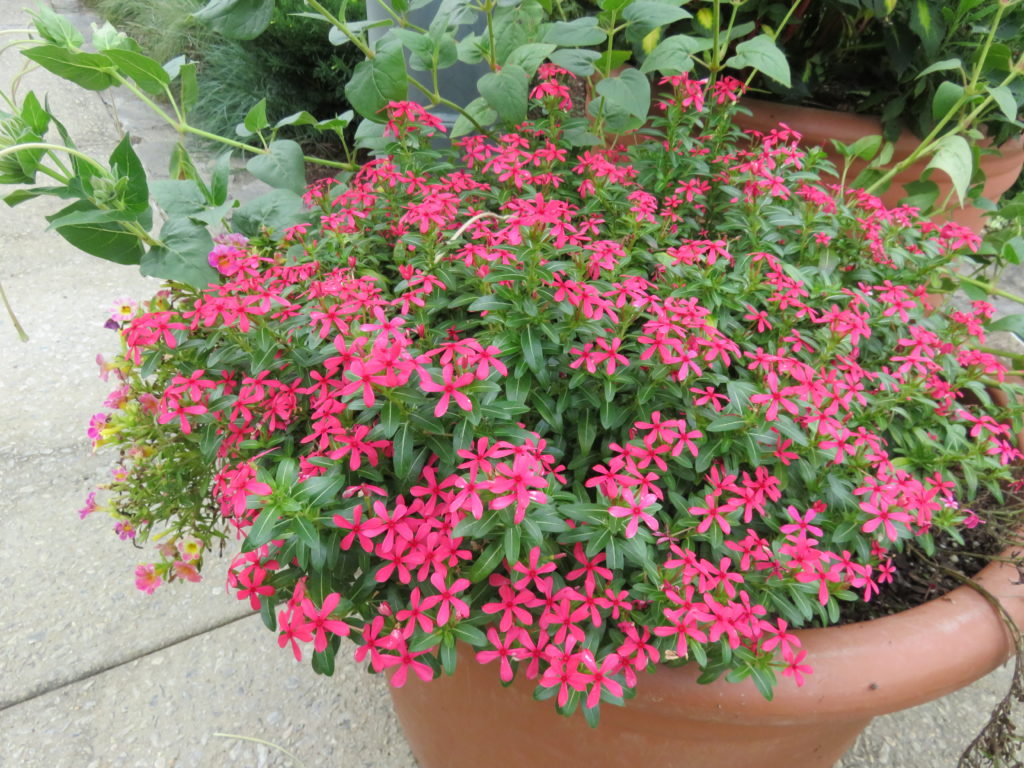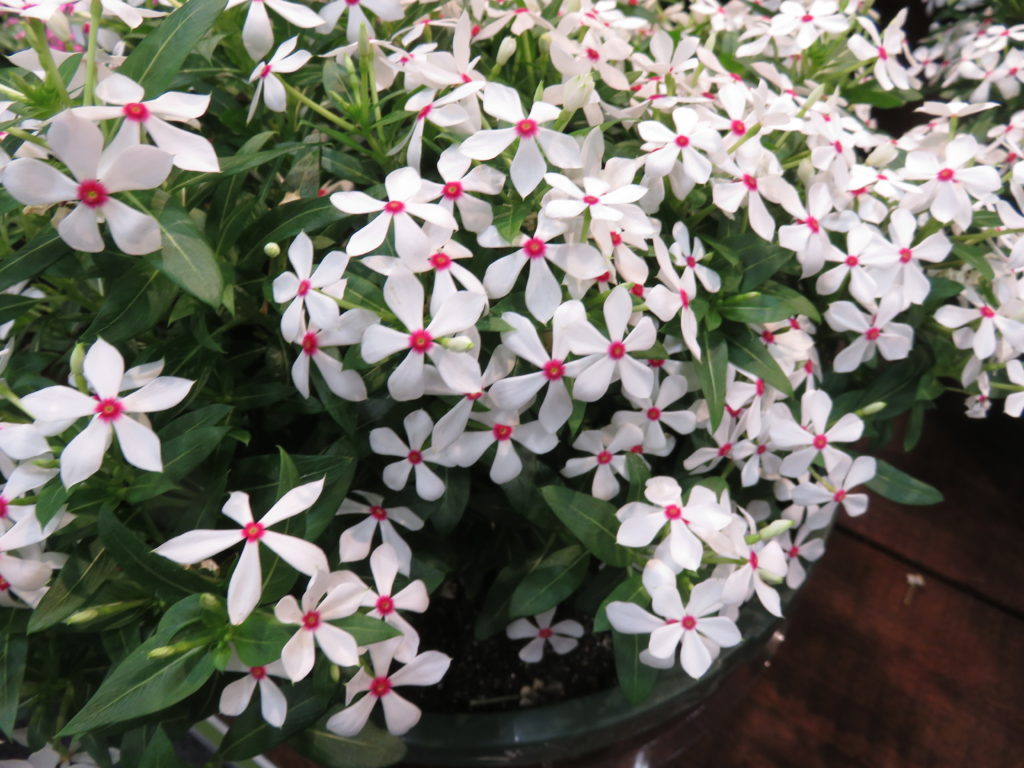
Vinca (Catharanthus), also called Madagasar periwinkle, is a popular summer flowering bedding plant. Soiree Kawaii® series of catharanthus hybrids from Suntory (C. roseus) continue among the favorites at California Spring Trials since their introduction three years ago. Vincas start blooming, and continuously thereafter, from spring planting to the first frost in autumn.
Soiree Kawaii vincas perform best in well-drained, humus-rich garden soils, and work equally well in containers. One caveat is that vincas despise cool wet soils. Fertilize plantings every 4-6 weeks with a water soluble product like Miracle Gro® or Peters®. Mulch beds and irrigate over extended dry spells. Plants don’t let up with colorful flowers through the hot humid days of summer.
The name Soiree Ka·wa·i·i means “cute” in Japanese to describe the adorable flower size and shape. Compared to most vincas, petals are dissected and offer a finer floral texture in garden beds and containers. Their bright, attractive flower petals are irresistible to pollinators, especially hummingbirds and butterflies. These micro-blooming vincas grow compact and spreading, and are exceptionally floriferous.
Vincas are valued for their neat mound-like growth habit. The dark foliage makes flowers pop in any setting. But what’s even more impressive is how nicely these plants fill out beds and containers. They do well in the landscape as a border, filler or in mass plantings.
Currently, six colors in these compact growing vincas are available. Soiree Kawaii Flower colors include: white, pink, coral, lavender, peppermint, red, and light purple. New! in 2021 is Blueberry Kiss®. Plants grow 6-10 inches high and 12-18 inches wide.
Soiree Kawaii vincas are perfect for all kinds of containers, including window boxes and hanging baskets, and they mix well edging wide planters. No pinching is needed. The attractive dark glossy green foliage compliments the profusion of blooms, creating tidy mounds of floral color.
Modern day vincas exhibit improved disease resistance compared to olden varieties that your mother once grew. Among diseases, be aware of Phytophthora aerial blight and Alternaria leaf spot. Potential insect pests include mites, whiteflies, aphids and thrips.


 Posted in
Posted in 
